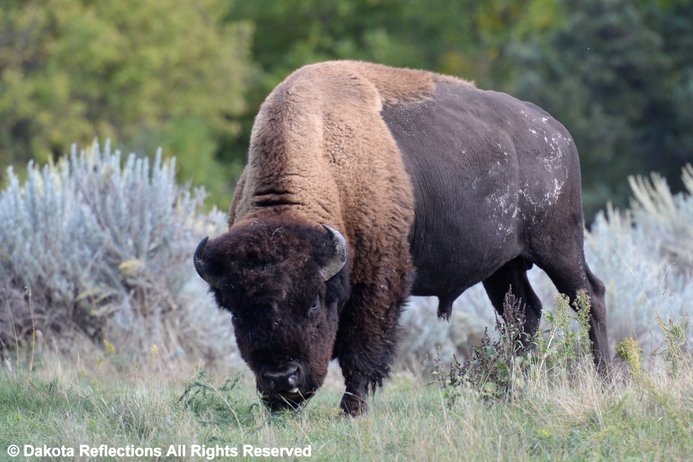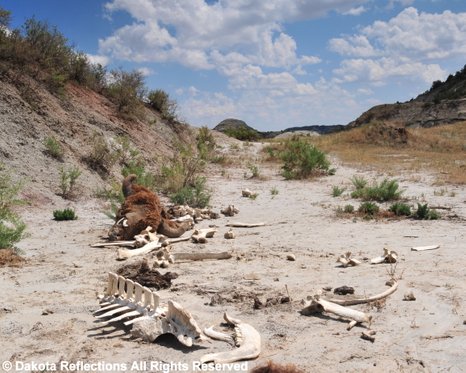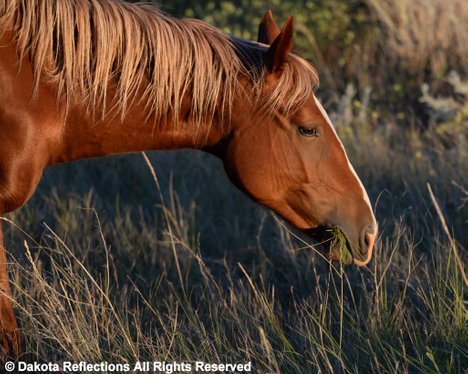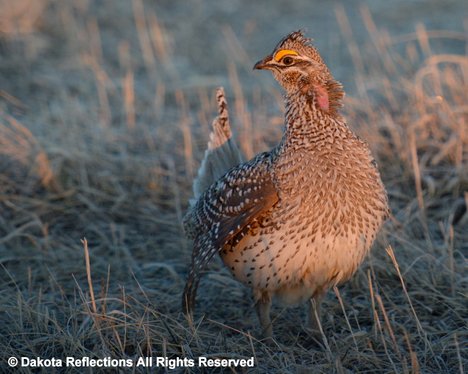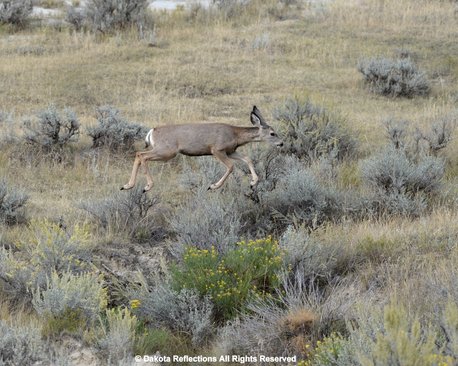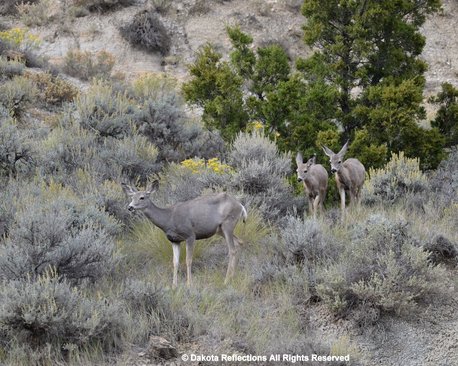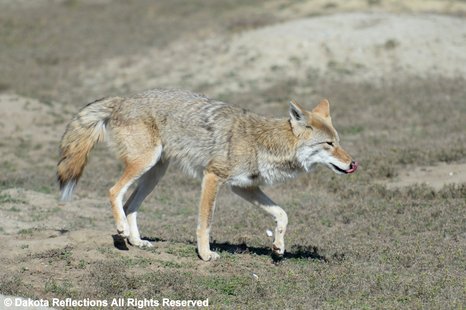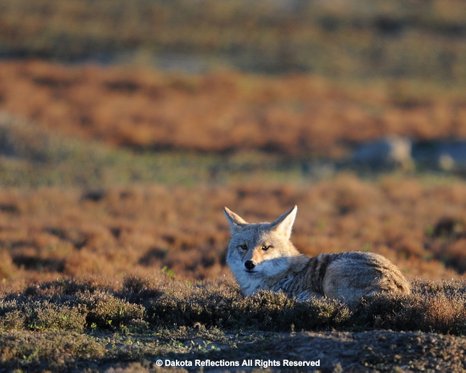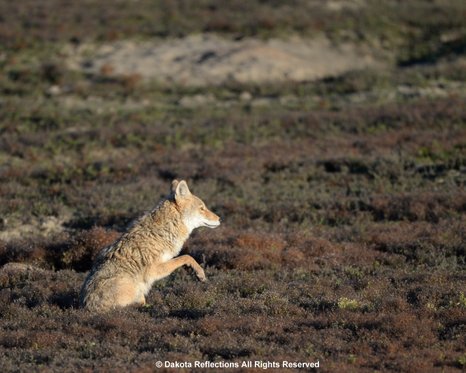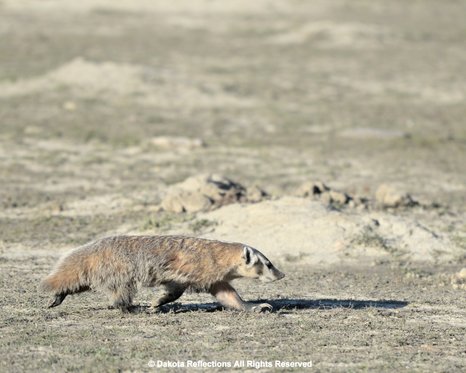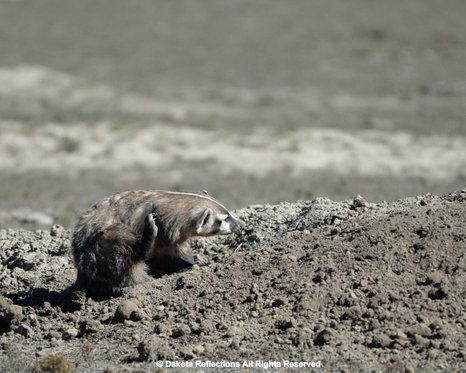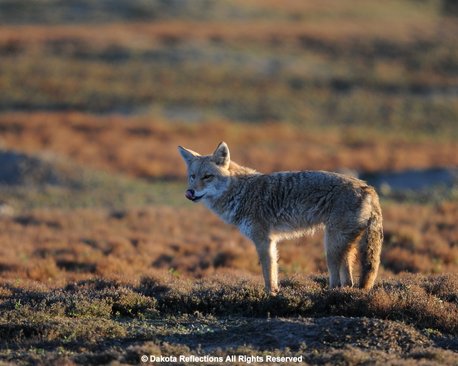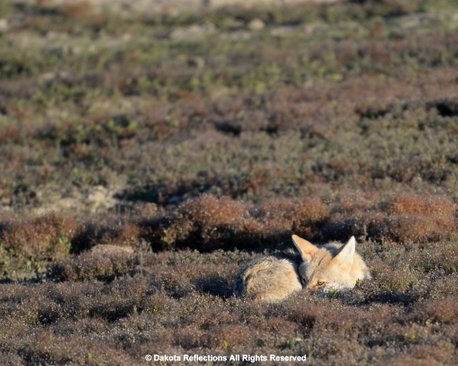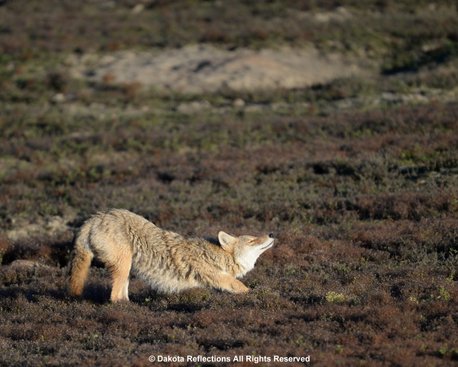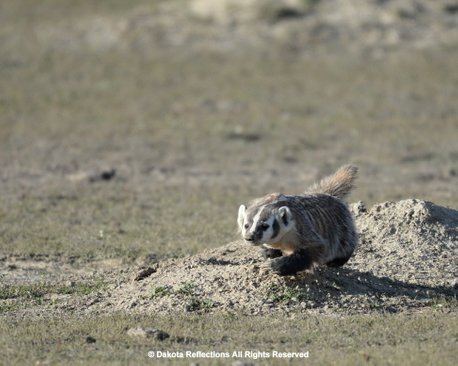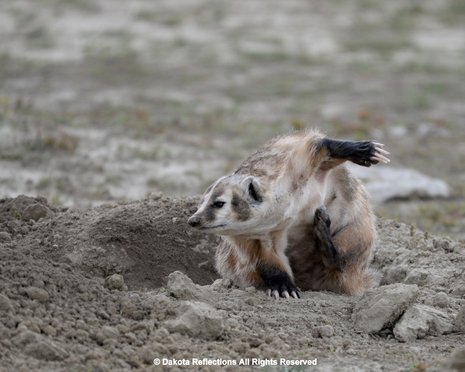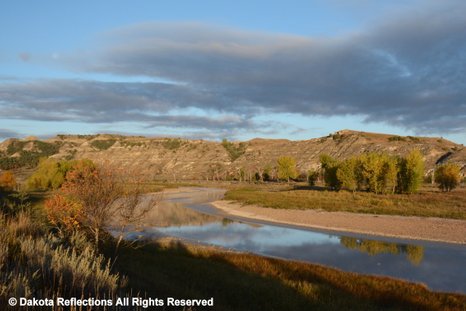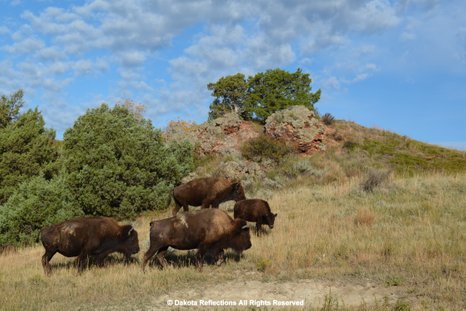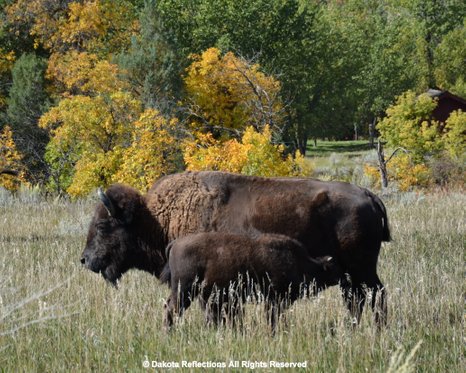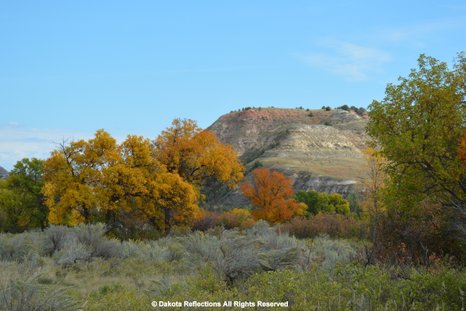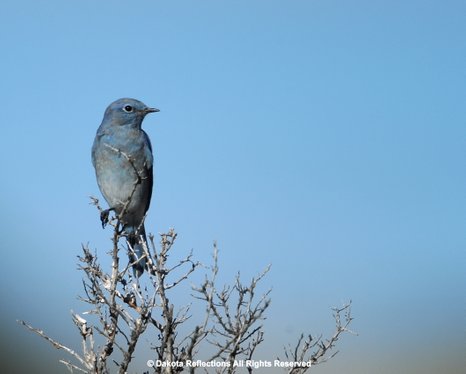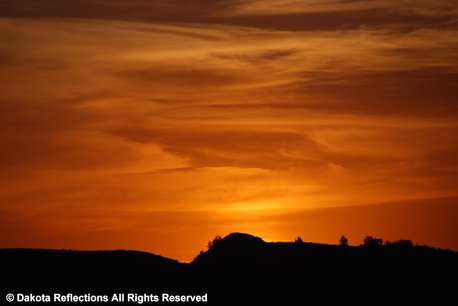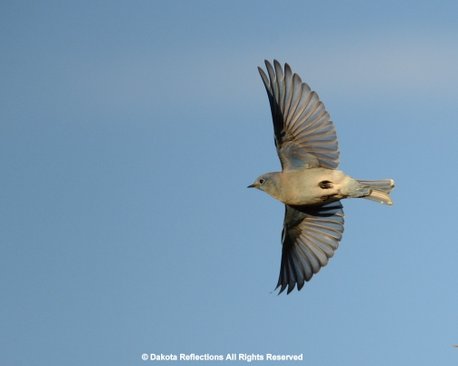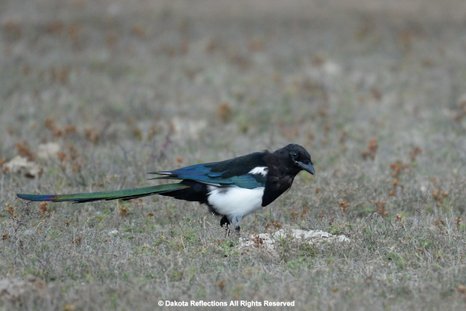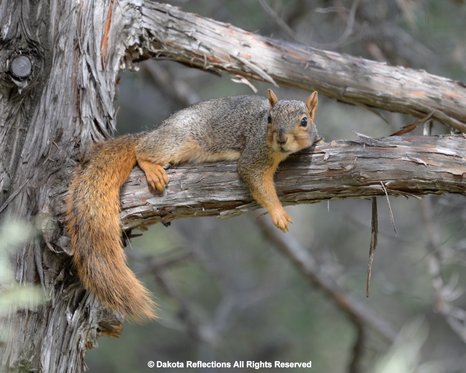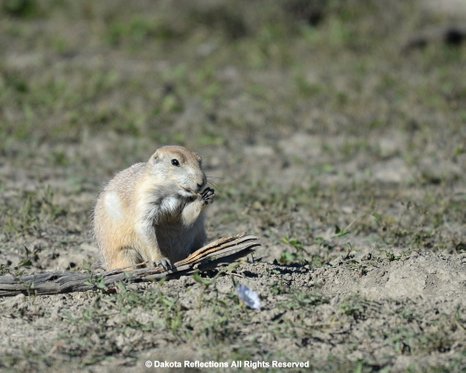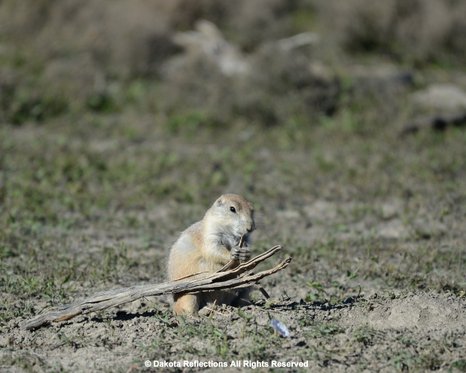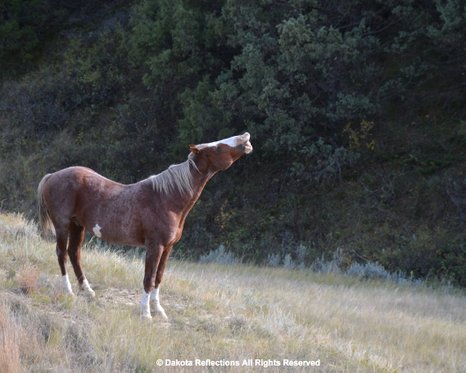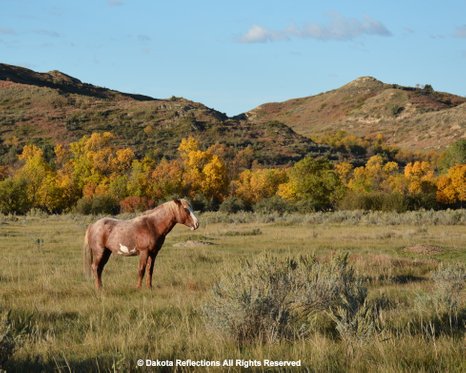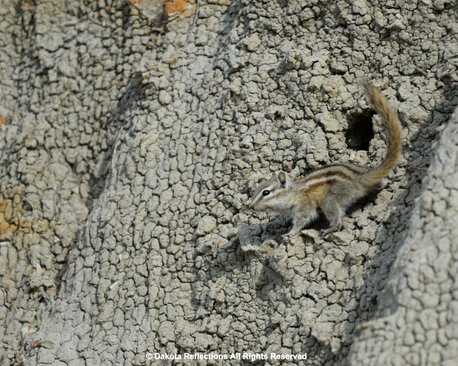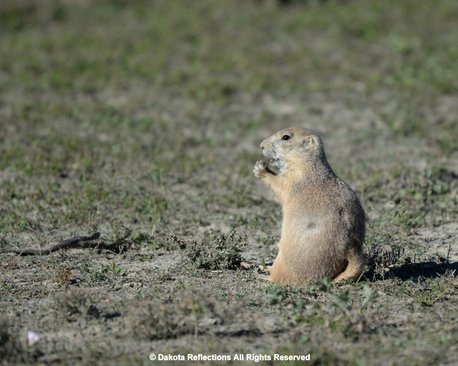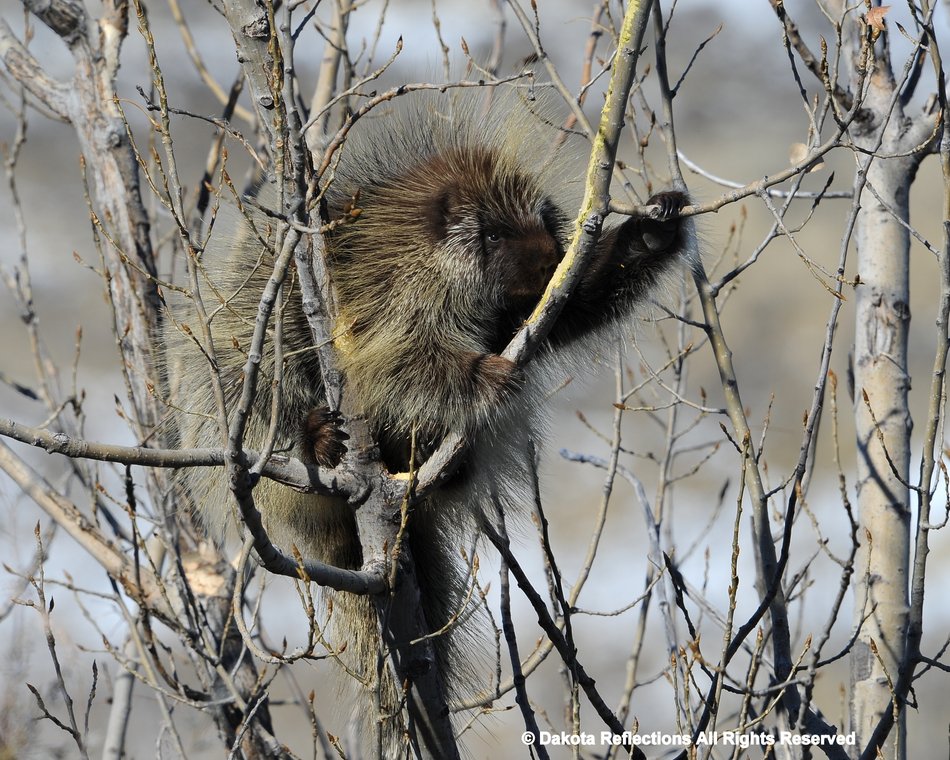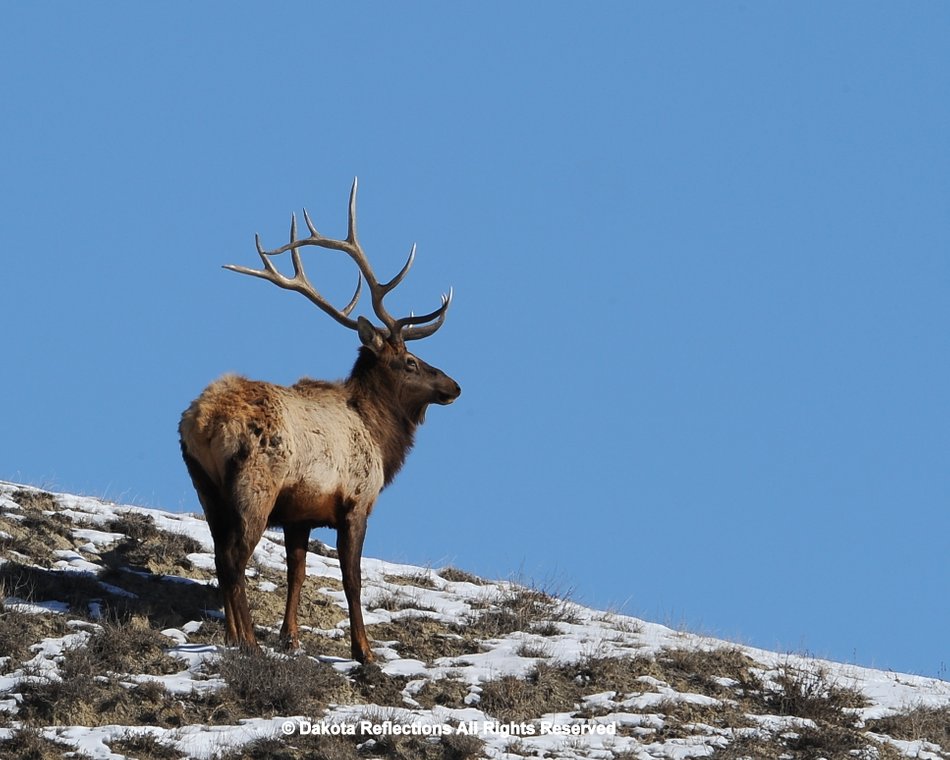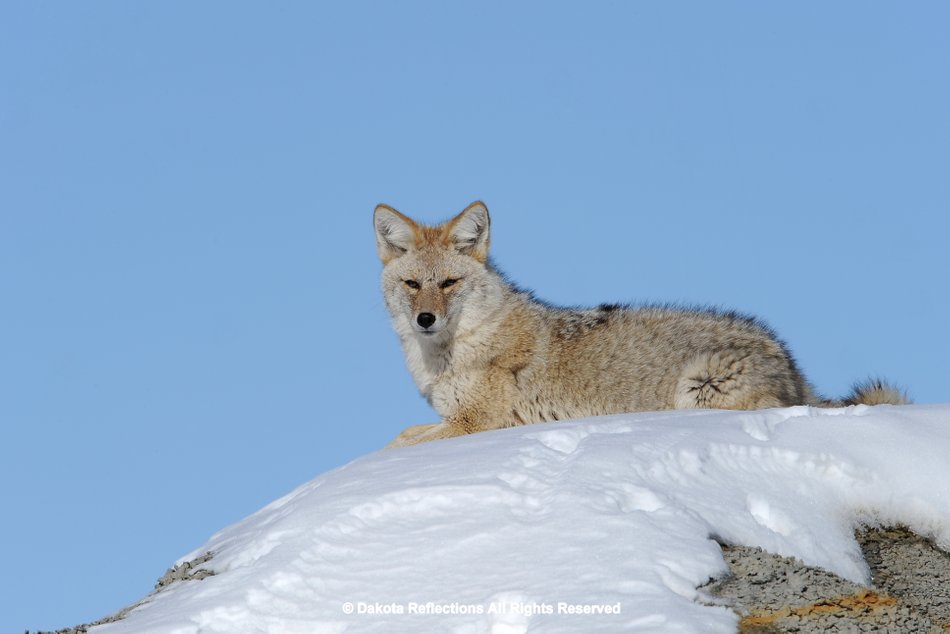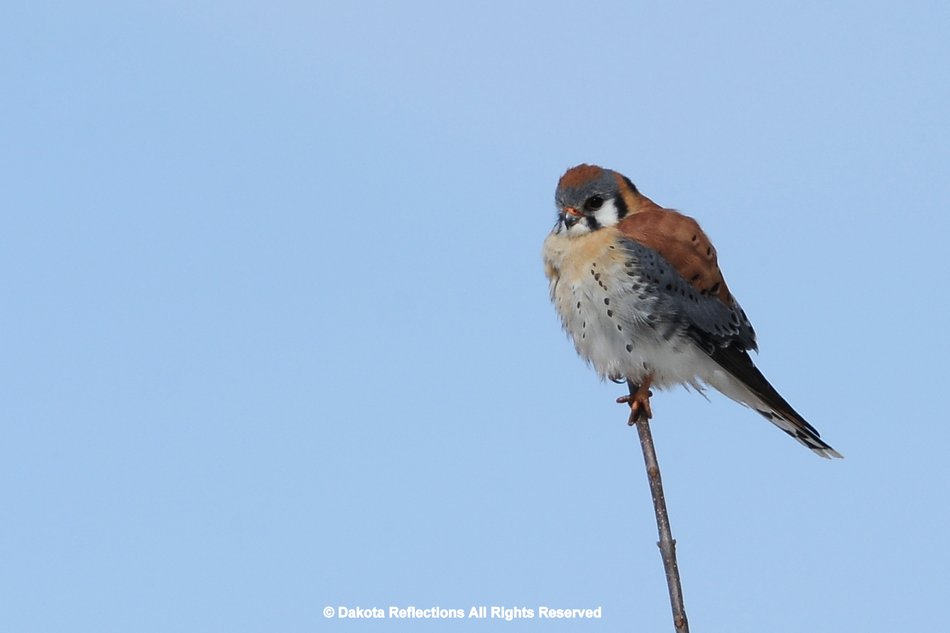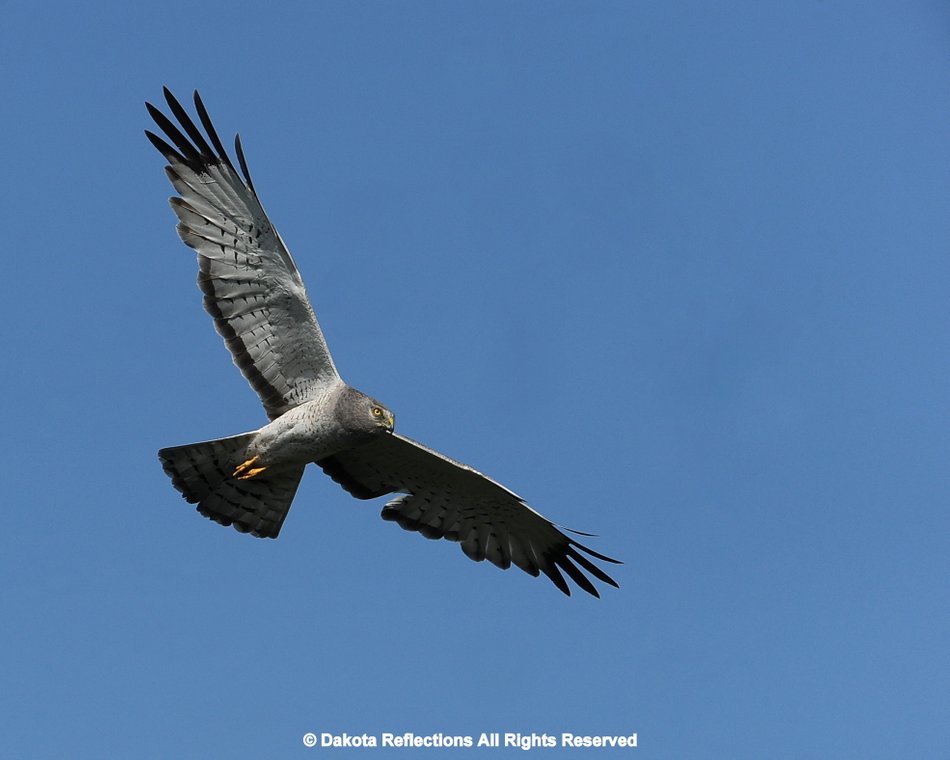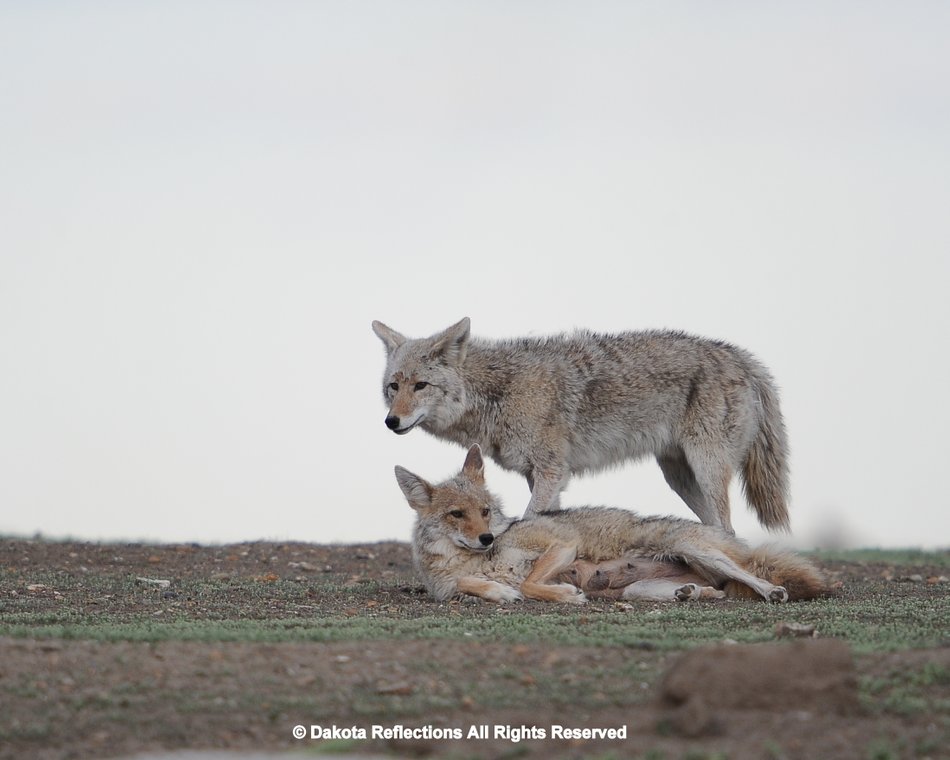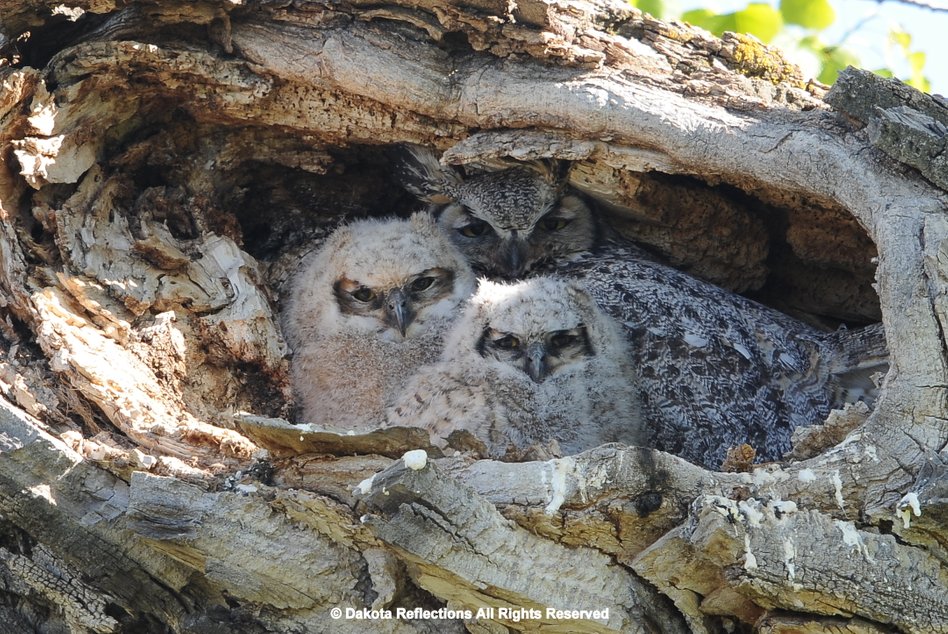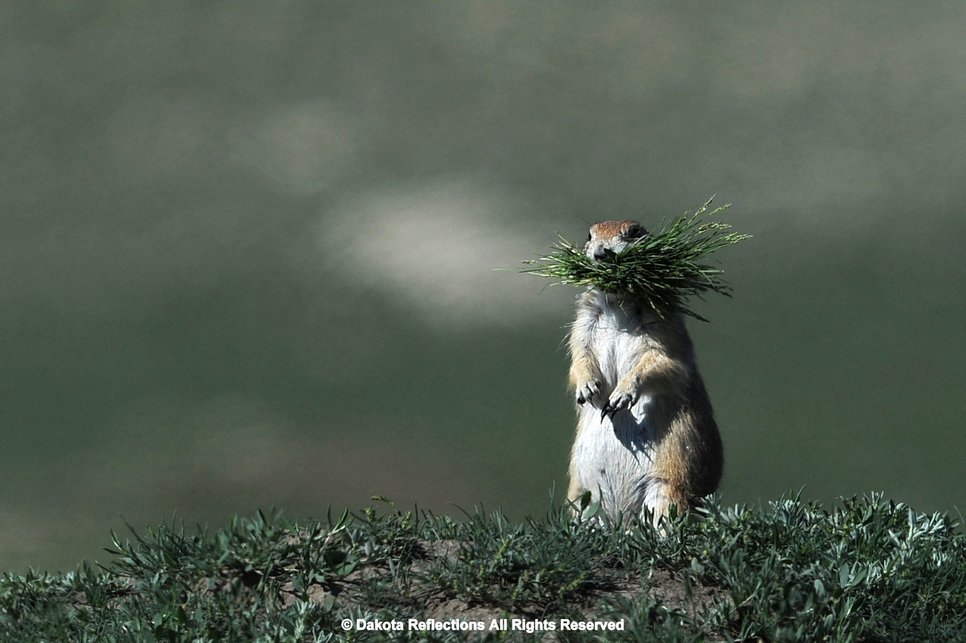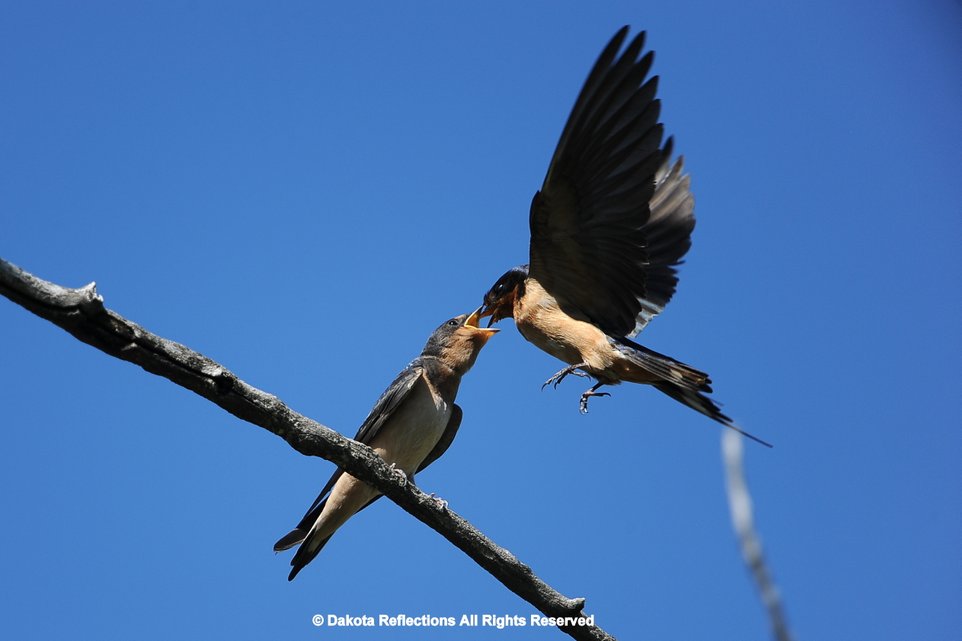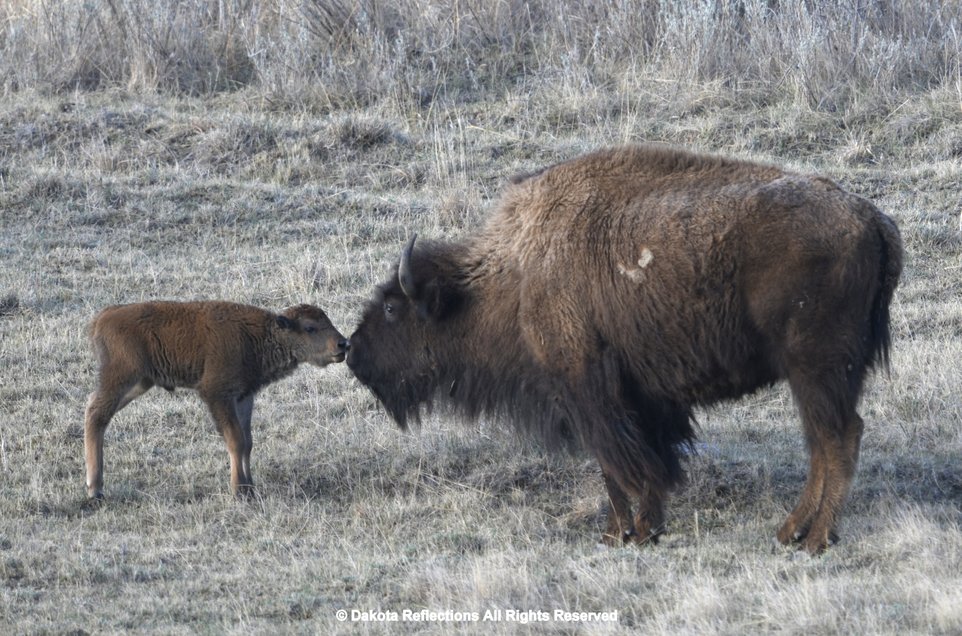Dakota Reflections
On April 25, 1947, President Truman signed the bill (PL-38) that created Theodore Roosevelt National Memorial Park. On November 10, 1978, the area was given national park status when President Carter signed Public Law 95-625 that changed the memorial park to Theodore Roosevelt National Park.
"The Bad Lands grade all the way from those that are almost rolling in character to those that are so fantastically broken in form and so bizarre in color as to seem hardly properly to belong to this earth." "I grow very fond of this place, and it certainly has a desolate, grim beauty of its own, that has a curious fascination for me." Theodore Roosevelt, 26th President of the United States of America 1901-1909, rancher in North Dakota Badlands 1883-1887
Theodore Roosevelt National Park
American Bison
Dust to Dust
American Bison
Pronghorn
Western Meadowlark
Mule Deer
Wild Horse
Sharp-tailed Grouse
Mountain Bluebird
Mule Deer
Theodore Roosevelt National Park contains 70,000 acres in three units: the South Unit has 46,158 acres of which 10,510 are designated wilderness; the North Unit has 24,070 acres of which 19,410 are designated wilderness and the Elkhorn Ranch has 218 acres. The Elkhorn Ranch was the site of Theodore Roosevelt's second ranch in the badlands. The park has excellent wildlife viewing opportunities.
Coyote
Coyote
Coyote
American Badger
American Badger
American Badger
Coyote at Sunrise
Coyote
Coyote
American Badger
American Badger
American Badger
A good place to see wildlife is the paved, 36-mile Scenic Loop Drive in the south unit. Mornings after sunrise and the two hours before sunset are the best time to see wildlife, including birds feeding in the morning. The park is home to a wide variety of wildlife including bison, coyotes, feral horses, badgers, elk, bighorn sheep (north unit only), white-tailed deer and mule deer, prairie dogs, and nearly 200 species of birds including golden mountain bluebirds, sharp-tailed grouse, loggerhead shrikes, black-billed magpies and wild turkeys.
Little Missouri River
American Bison
Nursing American Bison
Autumn Colors
Mountain Bluebird
Sunset North Dakota Badlands
American Bison
American Bison Rubbing on Butte
Sunset
Mountain Bluebird
The mountain bird's summer range extends from western North Dakota to Canada and Alaska. During the winter, the travel to southern central states and Central America. They hover while looking for insects.
Black-billed Magpie
Fox Squirrel
Black-tailed Prairie Dog
Black-tailed Prairie Dog
Feral Horse
Feral Horse
Loggerhead Shrike
Least Chipmunk
Black-tailed Prairie Dog
Black-tailed Prairie Dog
Feral Horse
Mule Deer
This North American porcupine was photographed in February 2018. Winter is a better time to see porcupines when leaves are absent. They are herbivores and eat leaves, herbs, twigs, and green plants such as clover. In the winter, they may eat bark. It often climbs trees to find food. The beaver is the only rodent in North America that is larger than the porcupine. An adult porcupine has about 30,000 quills.
This photographed was selected in the 2018 Theodore Roosevelt Nature and History Association Photo Contest and will be published in the 2019 Calendar for the month of February 2019.
This bull elk was photographed in February 2018. Elk are more than twice as heavy as mule deer. Elk cows average 500 pounds, stand 4.3 ft at the shoulder, and are nearly from nose to tail. Bulls are some 40% larger than cows at maturity, weighing an average of 700 pounds, standing 4.9 ft at the shoulder and averaging 8.0 ft in length. Only the males have antlers, which start growing in the spring and are shed each winter. The largest antlers may be 4 feet long and weigh 40. Antlers are made of bone which can grow at a rate of nearly 1 inch per day. While actively growing, the antlers are covered with and protected by a soft layer of highly vascularised skin known as velvet. The velvet is shed in the summer when the antlers have fully developed.
The average male coyote weighs 18 to 44 lbs and the average female 15 to 40 lbs. They have a varied diet including deer, rabbits, hares, rodents, birds, reptiles, amphibians, fish, and invertebrates, though it may also eat fruits and vegetables on occasion. Its characteristic vocalization is a howl made by solitary individuals. Humans are the coyote's greatest threat, followed by cougars and gray wolves.
This American kestrel was photographed in April 2008. It usually hunts by perching but also hunts from the air. American kestrels can hover in the air with rapid wing beats while homing in on prey. Ketrels eat grasshoppers and other insects, lizards, mice, and small birds. It nests in cavities in trees, cliffs, buildings, and other structures. The female lays three to seven eggs, which both sexes help to incubate.
This male Northern harrier was photographed in the summer of 2108. The northern harrier is 16–20 in long with a 38–48 in wingspan. Males and females look very different. Males weighing 10 to 14 oz while females weigh 14 to 26 oz, 3.5 in). They are relatively long winged and long tailed, having the longest wing and tail relative to its body size of any raptor occurring in North America. The nest is built on the ground or on a mound of dirt or vegetation. Nests are made of sticks and are lined inside with grass and leaves. Four to eight whitish eggs are laid. The eggs are incubated mostly by the female for 31 to 32 days. When incubating eggs, the female sits on the nest while the male hunts and brings food to her and the chicks. The chicks fledge at around 36 days old, though breeding maturity is not reached until 2 years in females and 3 years in males.
Family!
Coyotes are strictly monogamous, the couple establishes a territory and either constructs their own den or cleans out abandoned badger, marmot, or skunk earths. During the pregnancy, the male frequently hunts alone and brings back food for the female. The female may line the den with dried grass or with fur pulled from her belly. The gestation period is 63 days, with an average litter size of six.
Coyote pups are born in dens, hollow trees, or under ledges, and weigh 200 to 500 g (0.44 to 1.10 lb) at birth. They are completely dependent on milk for their first 10 days. The incisors erupt at about 12 days, the canines at 16, and the second premolars at 21. Their eyes open after 10 days, by which point the pups become increasingly more mobile, walking by 20 days, and running at the age of six weeks. The parents begin supplementing the pup's diet with regurgitated solid food after 12–15 days. By the age of four to six weeks, when their milk teeth are fully functional, the pups are given small food items such as mice, rabbits, or pieces of ungulate carcasses, with lactation steadily decreasing after two months. Unlike wolf pups, coyote pups begin seriously fighting (as opposed to play fighting) prior to engaging in play behavior. A common play behavior includes the coyote "hip-slam". By three weeks of age, coyote pups bite each other with less inhibition than wolf pups. By the age of four to five weeks, pups have established dominance hierarchies, and are by then more likely to play rather than fight. The male plays an active role in feeding, grooming, and guarding the pups, but abandons them if the female goes missing before the pups are completely weaned. The den is abandoned by June to July, and the pups follow their parents in patrolling their territory and hunting. Pups may leave their families in August, though can remain for much longer. The pups attain adult dimensions at eight months, and gain adult weight a month later.
https://en.wikipedia.org/wiki/Coyote
Great horned owls are some of the earliest-breeding birds in North America, seemingly in part because of the lengthy nightfall at this time of year and additionally the competitive advantage it gives the owl over other raptors. In most of North America, courtship is from October to December and mates are chosen by December to January. During courtship in late fall or early winter, the male attracts the attention of his mate by hooting emphatically. The male may convince the female by bringing her freshly caught prey, which they will share. While males often hoot emphatically for about a month or six weeks towards the end of the year, the period where females also hoot is usually only a week to ten days. Pairs typically breed together year after year and may mate for life, although they associate with each other more loosely when their young become mostly independent.
Males select nesting sites and bring the females' attention to them by flying to them and then stomping on them. Nests with open access, considering this birds large size, as opposed to enclosed with surrounding branches, are preferred. Like all owls, great horned owls do not build their own nest. They nest in a wider variety of nest sites than any other North American bird. Many nests are in cavernous hollows of dead trees or their branches, especially in southern states in large trees along the edge of old-growth lots. In mountainous or hilly areas, cliff ledges, small caves, and other sheltered depressions may be used. Owls living in prairie country, will use boulders, buttes, railroad cuts, low bushes and even the bare ground as nest sites.
They often take over a nest used by some other large bird, sometimes adding feathers to line the nest but usually not much more. The nests they use are often made by most larger types of acciptrids, from species as small as Cooper's hawks to bald eagle and golden eagle, though perhaps most often those of red-tailed hawks.
https://en.wikipedia.org/wiki/Great_horned_owl
Storing up for Winter!
Black-tailed prairie dogs weigh 1.5 to 3 pounds. During the long winter, they can loose up to 20 percent of their weight. They can eat up to 7 pounds of grass and other vegetation a month during the summer.
Storing up for Winter!
Bull elk can weigh up to 800 pounds. In spring and summer when food is plentiful, elk are mainly grazers. They primarily eat grasses, sedges and a variety of flowering plants. On average, an elk eats about three pounds of food per day for every 100 pounds it weighs. That means the average 500 pound cow will consume at least 15 pounds of food every day, while an 800 pound bull will gobble up 24 pounds of food.
https://www.grandviewoutdoors.com/big-game-hunting/elk/what-do-elk-eat/
The barn swallow is the most widespread species of swallow in the world, found in Europe, Asia, Africa and the Americas. They breed across the Northern Hemisphere and winter in much of the Southern Hemisphere as far south as central Argentina, the Cape Province of South Africa, and northern Australia. The barn swallow is a bird of open country that normally uses man-made structures to breed and consequently has spread with human expansion. It builds a cup nest from mud pellets in barns or similar structures and feeds on insects caught in flight.
https://en.wikipedia.org/wiki/Barn_swallow
Thanks for Breakfast!
Family!
The mom Moutain Bluebird is photographed leaving the nest while the dad Mountain Bluebird is about to enter, carrying a breakfast insect for their babies
Bond of Love!
Red Dog Baby Bison and Mom
Theodore Roosevelt National Park, North Dakota
May 5, 2021

